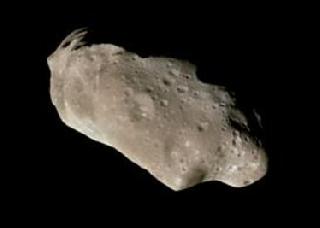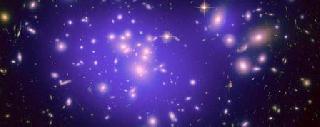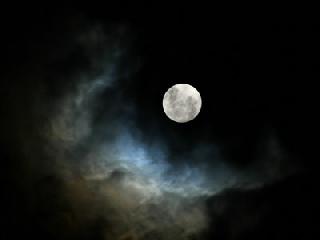
Ida is shown in this color image from the Galileo probe, taken 28 August 1993. Ida is a main-belt asteroid 58 km by 23 km in size. A file photo by Galileo, JPL, NASA.
NEW DELHI (PTI): Four new asteroids have been discovered by Indians, two of them school students, within a few days of each other, findings which could help contribute to future astronomical research.
The All India Asteroid Search Campaign, held from May to August in various parts of the country, has resulted in the discovery of four Main Belt Asteroids - 2010 PU57, 2010 PV57, 2010 PO4 and 2010 PL26, and a virtual impactor - 2010 NB2.
"Some especially complex methods called 'Stack and Track' were employed to analyse the observatory data to make fainter objects stand out, thereby, discovering two extremely faint asteroids," said Vikrant Narang, Scientific Officer at Science Popularisation Association of Communicators and Educators (SPACE).
Narang and his team comprising educators Tanmay Paranjape and Priyanka Srivastava are behind the discovery of the PU57 and PV57 main belt asteroids.
The Main Asteroid Belt is located between the orbits of Mars and Jupiter, where small rocky and metallic objects called asteroids, sometimes also called minor planets or planetoids, orbit the Sun, whereas virtual impactors are asteroids which can possibly hit the Earth.
Organised by SPACE and US-based International Astronomical Search Collaboration (ISAC), the campaign was held in India for the first time and about 45 schools and organisations participated from different parts of the country, including Delhi and National Capital Region.
"These are important observations that will contribute to the NASA Near-Earth Object (NEO) Program, that studies certain types of comets and asteroids, at the Jet Propulsion Laboratory in California," said Prof Patrick Miller, Director of ISAC.
The other two asteroids, PO4 and PL 26, were discovered by Amanjot Singh and Sahil Wadhwa, class 12th students of Ryan International School, Rohini.
"We put in 45 days of hard work. I am very excited about the discovery we made," said Sahil, while his classmate Vikrant described the achievement as "great".
"Though we did have some expectations, we were very surprised when we learnt about the great discovery," he said.
Rathnashree, Director of Nehru Planetarium, described the discovery of the four asteroids as 'raining of asteroids'.
"The discovery of asteroids is very nice.
Congratulations to all involved," she said.
Rathnashree said the efforts made by the international group in distributing analysable data to students, along with providing user friendly analysis tools, was very inspiring.
"Kudos to SPACE for bringing these possibilities to the notice of so many students and amateur astronomers and giving them all the encouragement and training that they needed," she said.
Using images taken of the sky in the night with 24" and 32" telescopes at the Astronomical Research Institute (ARI) Observatory, USA, the programme gave students a chance to sift through data with specialised software to make original discoveries of Main Belt Asteroids and important observations.
SPACE nodal Center students P Jhaveri, A Shah and M Shastri from Navrachana School, Vadodara, have also made a Virtual Impactor Observation (asteroids with a possibility of impacting the Earth) discovery of 2010 NB2 on July 19th as part of the same programme.
 Previous Article
Previous Article Next Article
Next Article












The Indian Air Force, in its flight trials evaluation report submitted before the Defence Ministry l..
view articleAn insight into the Medium Multi-Role Combat Aircraft competition...
view articleSky enthusiasts can now spot the International Space Station (ISS) commanded by Indian-American astr..
view article